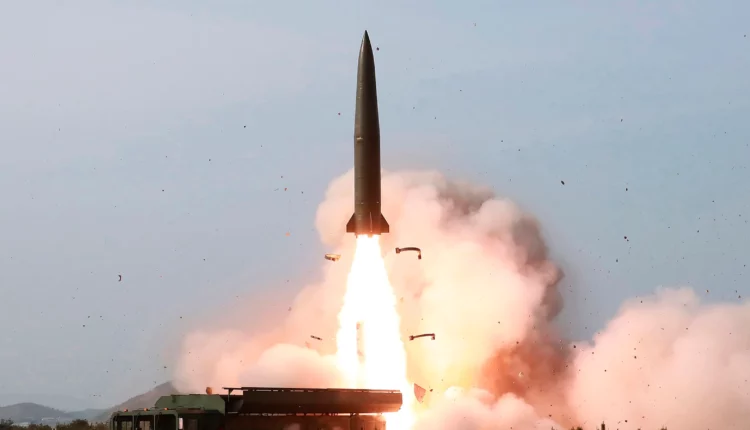©2021 Reporters Post24. All Rights Reserved.
The recent reports, if true, about the operational use of the Kh-50 missile by Russia are sure to send a chill down the collective spines of the Ukrainian leadership.
The reports first appeared in the Russian language blogosphere. Later, they started to appear in traditional media. Rossiyskaya Gazeta, on August 3, citing unnamed media, wrote about the growth in production and the active use of the Kh-50.
What’s The Big Deal?
Russia has several capable cruise missiles, but they all have serious shortcomings in the context of the Ukraine war. They are either very heavy (Kh-101, Kh-55) or not stealthy (3M14 Kalibr, Kh-55), or both (Kh-55).
Some don’t have the range (Onyx). The really good ones – destructive and unstoppable (Kinzhal and Iskander-M) – are woefully expensive and can only be used sparingly.
The problem with heavy missiles such as the Kh-101 and Kh-55 is – they needed to be hauled into the air for launch by lumbering bombers. The heat signatures from the four engines of the bombers are picked up by US SBIRS satellites as soon as the bombers start up for taxying, giving Ukraine 1 to 2 hours of warning!
Following their launch from the bombers, the heat signature from the turbojets powering the heavy missiles is also likely tracked by US satellites, notwithstanding the LO (low observable) shaping of the missile!
The lighter but non-LO missiles are easily tracked by Ukrainian surveillance and air defense (AD) radars, as also by US/NATO AWACS. Many of them are shot down before they reach their targets.
What Russia needs most and doesn’t have is a Storm Shadow/Scalp-EG-like missile with a 1500 km range. Well, the Kh-50 is just that!
Are Reports Of Kh-50 Use Credible?
One reason why the reports may be credible is that it was the Ukrainian General Staff that, in mid-April 2023, first stated that Russia was reviving production of the hitherto dormant Kh-50 missile project.
The Ukrainian Air Force spokesperson Yuriy Ihnat told the media that Russia wanted to revive old projects, like plans to produce Kh-50 missiles.
“Previously, the Kh-50 project was impractical for Russia because they had a better missile – the Kh-101,” Ihnat said.
Deputy Chief of the Main Operational Directorate of the General Staff of the Armed Forces of Ukraine, Oleksii Hromov, said Russia intends to mass-produce Kh-50 cruise missiles by fall this year.
For some time, a stock of such products will be accumulated, which will then begin to be used in strikes against Ukrainian targets.
Kh-50 Features
Raduga Design Bureau of Dubna developed the Kh-50 within the Kh-SD (Sredney Dalnosti, medium-range) program. Research and development work on the Kh-SD began in the early 1990s but was subsequently suspended for several years.
According to Janes, the Kh-50 is about six meters long and weighs around 1,600 kg. It’s powered by an OMKB izdeliye 37-04 (or TRDD-50B) turbofan engine.
The missile is estimated to have a range of over 1,500 km, a cruise speed of 700 kph, with a max speed of 950 kph. (Faster cruise would result in a shorter range.)
The missile is estimated to feature a warhead weighing 450 kb.
The missile’s airframe features a flattened cross-section and faceted sides. The shape combines the requirements of low radar cross-section and the most efficient use of the heavy bomber’s weapon bay capacity when loaded on a six-round rotating launcher.
In several ways, the Kh-50 comes through as a miniaturized Kh-101. Like the Kh-101, the Kh-50 represents the state of the art in cruise missile technology. Both missiles feature:
-
LO shaping
-
Composite airframe for radar signature reduction
-
INS navigation with SATNAV / TERCOM (Terrain Comparison) fixing
-
Optical / IR target recognition
The Kh-50’s electro-optical digital correlating system for navigating and target recognition, called “Otblesk,” is roughly analogous to US DSMAC.
The Kh-50 is about 1.5 meters shorter than the Kh-101 and about 800 kg lighter. Both the missiles have a 400-450 kg warhead.
Because of its smaller size, the Kh-50 carries less fuel and consequently has a shorter range. The estimated range for the Kh-101 is 5500 km and for the Kh-55, just 1500 km.
Kh-50 Missile Advantages
Being smaller, the Kh-50 likely has a lower radar signature.
Additionally, it is honed for low-altitude flight and features a defensive suite comprising EW and flare heat traps. Not only can the missile evade radar detection, but it can also protect itself from air defense and air-to-air missiles equipped with RF and IIR seekers.

The Kh-50 can penetrate heavily contested airspace better than any other Russian cruise missile.
To negate the superiority of Russian fighters, the West has generously transferred its best AD systems to Ukraine. The Kh-50 is honed to fly through NASAMS, IRIS-T, and Patriot systems defended airspace unscathed.
In the context of Ukraine, the shorter 1,500 km range of the Kh-50 missile is a blessing, not a handicap. Besides making the missile stealthier, it makes it cheaper and more cost-effective.
The smaller size and higher speed of the Tu-22M3 will complicate missile launch detection and likely allow the launch platform to come close to the battlefront, reducing flight and warning time.
Conclusion
No one has seen the Kh-50, and no one has been briefed on the features of the Kh-50 missiles.
Like the blind men in the fable – The Five Blind Men of Hindustan – we could say the Kh-50 is a miniaturized Kh-101 or a souped-up Storm Shadow. We would be partly right either way.
Whichever way you look at the missile, its operational introduction into the special military operation in Ukraine will likely give Russia a serious advantage, as did the Ka-52 helicopter, Lancet Kamikaze drone, and FAB-500M62 glide bomb.


